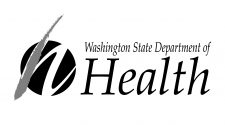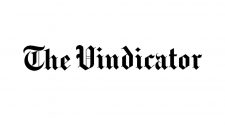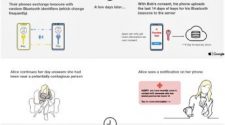On June 5, 2021, the Department of Health and Human Services (HHS) issued new data on enrollment in coverage options under the Affordable Care Act (ACA). Using enrollment data from 2020 and 2021, a new report from the Assistant Secretary for Planning and Evaluation (ASPE) estimates that 31 million people were enrolled in marketplace or Medicaid coverage. The report was released alongside a press release and effectuated enrollment report for 2020 and early 2021.
The enrollment of 31 million people is a record high and shows an ongoing need for affordable coverage, especially for Americans without job-based coverage. This has been especially true during the pandemic—Medicaid and the marketplaces have served as an important source of coverage following job loss and economic instability. ASPE’s report also comes at a time when we are awaiting the Supreme Court’s decision in California v. Texas, a global challenge where the Court could invalidate all or parts of the ACA. The new ASPE data underscores just part of what is at stake in Texas—and the potential for coverage loss and chaos if the ACA is invalidated.
The estimate of 31 million Americans is likely an undercount because ASPE’s analysis only includes some ACA coverage expansions. This estimate does not, for instance, reflect the number of young adults who were able to remain on a parent’s plan until age 26. (In 2016, ASPE estimated that 2.3 million young adults gained coverage under that provision from 2010 to 2013.) And current marketplace enrollment is likely higher since ASPE’s report only captures enrollment as of February 2021. This means the estimates do not reflect increased enrollment during special enrollment periods (including the broad special enrollment period for HealthCare.gov from February 15 to August 15) or the impact of enhanced subsidies under the American Rescue Plan Act. Enrollment through HealthCare.gov has already increased by more than 1 million people as of May 11; this is not reflected in ASPE’s analysis.
A Deeper Dive On The ASPE Data
Overall, 31 million people were enrolled in marketplace or Medicaid expansion coverage under the ACA. This includes 11.3 marketplace enrollees with effectuated coverage as of February 2021, 14.8 million Medicaid expansion enrollees as of December 2020, an additional 3.9 million Medicaid expansion enrollees who would have been eligible for Medicaid pre-ACA but were enrolled via Medicaid expansion, and 1 million Basic Health Program (BHP) enrollees in Minnesota and New York.
This estimate—of 31 million people—is significantly higher than prior years. Indeed, the totals for marketplace, Medicaid expansion, and BHP enrollment remained steady from 2016 through 2020, ranging from about 26.4 million to 27.1 million. The increase to 31 million reflects an addition of nearly 4 million people who obtained coverage through these programs from 2020 to 2021.
Much of this increase appears to be driven by higher Medicaid enrollment, which increased by about 3.2 million from 2020 to 2021 in total. This is perhaps unsurprising given the effects of the pandemic. As incomes fell to under 138 percent of the federal poverty level, more people became eligible for Medicaid expansion in the 38 states (including the District of Columbia) that have expanded their programs under the ACA.
Higher Medicaid enrollment is likely bolstered by the maintenance of effort requirements included under the Families First Coronavirus Response Act. In this pandemic relief legislation, Congress provided a 6.2 percentage point increase in the federal match rate for state Medicaid programs so long as states provide continuous enrollment throughout the pandemic. States could not disenroll people even if, under normal circumstances, a life change might make a beneficiary ineligible. (Critics note that parts of this requirement were eroded by an interim final rule issued by the Trump administration in fall 2020.)
ASPE also highlights the fact that there were substantial reductions in the uninsured rate in every state and the District of Columbia from 2013 to 2019. The national uninsured rate decreased by 5.3 percentage points from 2013 to 2019, and seven states—all of which expanded their Medicaid programs—saw their uninsured rates drop by at least half. These states are California, Kentucky, New York, Oregon, Rhode Island, Washington, and West Virginia. Massachusetts continues to have the lowest uninsured rate in the nation (3 percent) while Texas has the highest uninsured rate (18.4 percent). (This state-specific data does not reflect changes resulting from the pandemic or recent efforts by the Biden administration to expand access to coverage, since the most recent state-level information is from 2019.)
Report On Effectuated Enrollment
The ASPE report reflects a separate analysis of effectuated enrollment in marketplace coverage for 2020 and early 2021. For a consumer’s insurance policy to go into effect (or “effectuate”), the consumer must both select a plan during the enrollment process and pay the premium. Thus, effectuated enrollment refers to the number of individuals with an active health insurance policy who paid their premium.
The Centers for Medicare and Medicaid Services (CMS) previously issued a report on effectuated enrollment for the first half of 2020 showing that, through June 2020, an average of 10.5 million individuals had effectuated their 2020 marketplace coverage through both HealthCare.gov and state-based marketplaces. This was a higher rate, by about 3 percent, relative to the same time in 2019. CMS attributed this increase to lower attrition during 2020 and higher enrollment during special enrollment periods.
Effectuated Enrollment For 2020
On June 5, CMS released a new report on effectuated enrollment for 2020 and through February 2021. In 2020, a monthly average of 10.4 million consumers effectuated marketplace coverage. This is an even higher rate—a 6 percent increase—compared to the monthly average of 9.8 million consumers for 2019. Effectuated enrollment increased by at least 10 percent in California, Delaware, Florida, Georgia, Iowa, Maryland, Mississippi, and Texas; total effectuated enrollment fell by 10 percent or more in only Idaho.
Consistent with prior years, effectuated enrollment varied during the year. Monthly effectuated enrollment peaked in February 2020 at 10.6 million consumers and fell to 9.9 million consumers by December 2020. However, effectuated enrollment was more stable throughout 2020 than it was in 2019, when effectuated enrollment declined from 10.5 million consumers in January 2019 to 9.1 million consumers in December 2019.
Of those with effectuated marketplace coverage in 2020, 86 percent (about 9 million people) received advance premium tax credits. Half of enrollees (about 5.2 million people) also qualified for cost-sharing reductions. Average monthly premiums were $572.52, down slightly from 2019.
Early Trends In Effectuated Enrollment For 2021
The same report finds that 11.3 million consumers had effectuated marketplace coverage for February 2021. This accounts for 94 percent of the 12 million consumers in all 50 states and the District of Columbia who made a plan selection during the 2021 open enrollment period. Effectuated enrollment is six percent higher relative to February 2020, when 10.7 million consumers had effectuated coverage. (CMS lists effectuated coverage in February 2020 as both 10.6 million and 10.7 million at different places in the same report.)
Five states—Florida, Georgia, Maryland, New Jersey, and Texas—saw effectuated enrollment increase by 10 percent or more from 2020 to 2021 while two states—Massachusetts and New York—saw decreases by 10 percent or more. Consistent with prior years, 86 percent of marketplace enrollees (about 9.7 million people) received advance premium tax credits in February 2021. Nearly half of enrollees (about 5.4 million people) also qualified for cost-sharing reductions. Average monthly premiums were $574.59, about the same as 2020.
The 2021 data may be revised over time, and federal officials intend to release a mid-year report on effectuated 2021 coverage as they have in prior years.

















